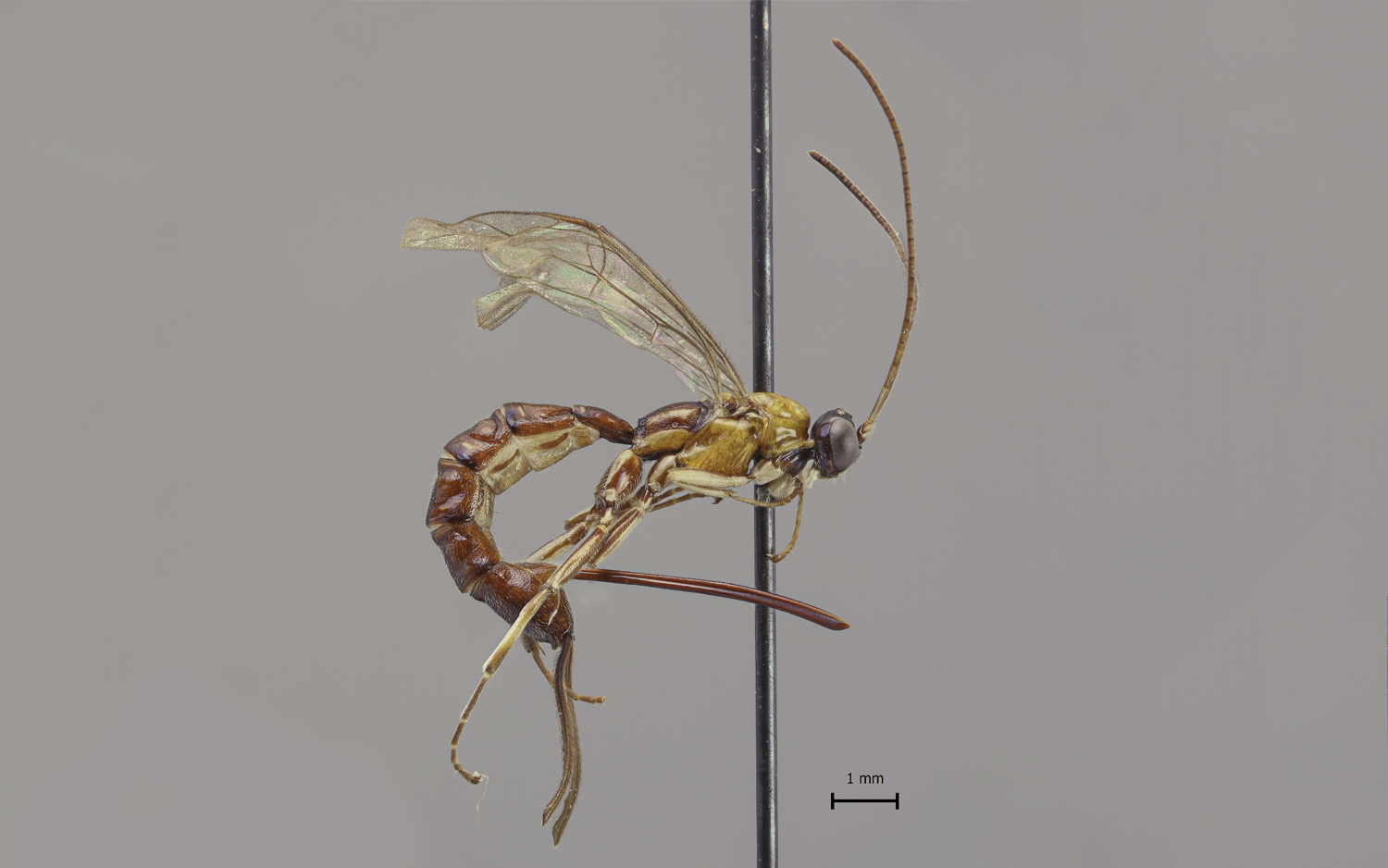Amazon Wasp with Enormous Stinger May Just Haunt Your Nightmares

There's a new species on the list of terrifying creatures of the Amazon: Calistoga crassicaudata. It's a tiny parasitoid wasp with a giant stinger that the female uses not only to paralyze her host but also to deposit eggs inside the unsuspecting creature (who will soon suffer a grueling death as the baby wasps burst out of its body).
Researchers published a striking image and detailed description of C. crassicaudata, along with six other new wasp species, in the journal Zootaxa. C. crassicaudata, which is just 9.8 millimeters long, boasts a somewhat phallic-looking stinger that is about half its body length.
"We are finding new species all the time, but only a small fraction of them are so exciting," said Ilari Sääksjärvi, an entomologist at the University of Turku in Finland and co-author on the paper.
C. crassicaudata is a type of parasitoid wasp. These wasps lay their eggs on or in the bodies of other insects, eventually killing them. [Biodiversity Abounds: Stunning Photos of the Amazon]
The stinger is also called an ovipositor, as the wasp uses the body part to place its eggs inside a host's body. "Parasitoid wasp ovipositors (stingers) are usually long," Sääksjärvi told Live Science in an email. "But this species differs from the others as the ovipositor is also very wide, kind of thickened apically and strong."
It might seem tricky to catch one of these needle-wielding wasps without getting stung, but Sääksjärvi said the sting of parasitoid wasps doesn't hurt much compared with those of other wasps and bees. And, he said, the species with superlong stingers typically can't sting humans because their stinger is too flimsy.
Although these wasps look scary and their egg hosts suffer a cruel, slow death, parasitoid wasps are important for controlling the populations of other pests, according to the University of Maryland.
Sign up for the Live Science daily newsletter now
Get the world’s most fascinating discoveries delivered straight to your inbox.
They're a highly diverse group, too. "We keep finding new species, almost on a weekly basis," Sääksjärvi said. There are so many species that Sääksjärvi said he and his colleagues "only have time to describe part of them." So, go ahead and continue letting your imagination run wild about what else lurks in the Amazon.
Original article on Live Science.

Kimberly has a bachelor's degree in marine biology from Texas A&M University, a master's degree in biology from Southeastern Louisiana University and a graduate certificate in science communication from the University of California, Santa Cruz. She is a former reference editor for Live Science and Space.com. Her work has appeared in Inside Science, News from Science, the San Jose Mercury and others. Her favorite stories include those about animals and obscurities. A Texas native, Kim now lives in a California redwood forest.









